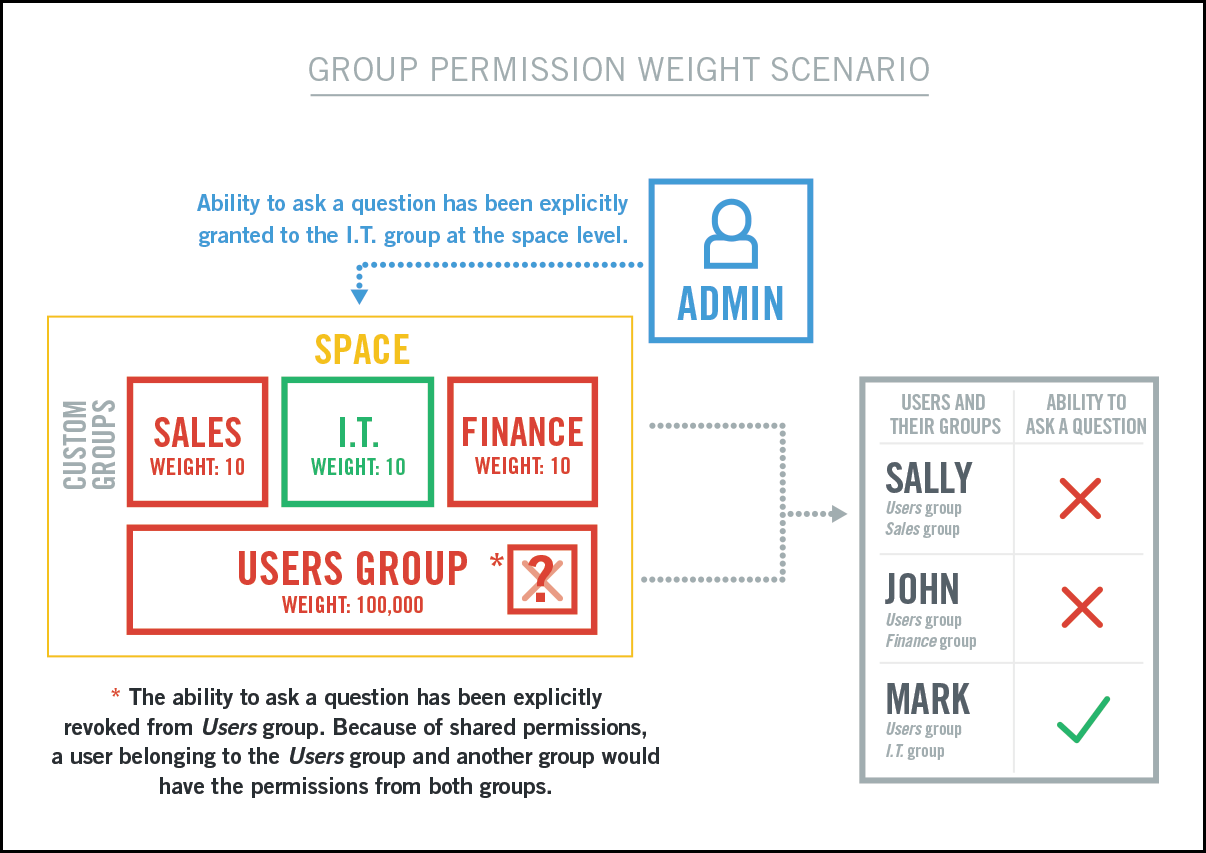Overview
By default, AnswerHub will resolve conflicting permissions using explicit and inherited permission rules (explicit always overrides inherited permissions). Despite this, there will still be times when a user will have conflicting permissions at the same level of the AnswerHub Hierarchy. When this happens, a group's weight will come into play. This article explains a general view of how the weight works in the AnswerHub permissions system.
Information
Weight is the way that the AnswerHub platform resolves issues resulting from a user belonging to 2 different groups that have conflicting permissions set at the same level of the AnswerHub Hierarchy. If one of the permissions is inherited and the other explicit, the explicit will override the inherited permission. If both are inherited or both explicit, then the permission which is granted to or revoked from the group with the lowest weight will override the other. The lighter the weight, the higher it floats. The heavier the weight, the lower it sinks. The higher up your item is, the more important it is and therefore will override less important heavier items.
For Example:
If both groups have the same weight, then the more restrictive (revoked) permission would override the other. In the above example, if both The Users and I.T. groups had a weight of 10, then the ability to ask a question would be revoked for Mark.
Resolving Conflicting Permission Settings
The following table describes how conflicting permissions are resolved in different scenarios:
- Custom groups, by default, have a weight of 10. For information about adjusting a group’s weight
setting, please see the AnswerHub Administrator Guide. - For each of these scenarios assume that a user belongs to all three groups and that the Ask question permission is being granted or revoked.


Priyanka Bhotika
Comments